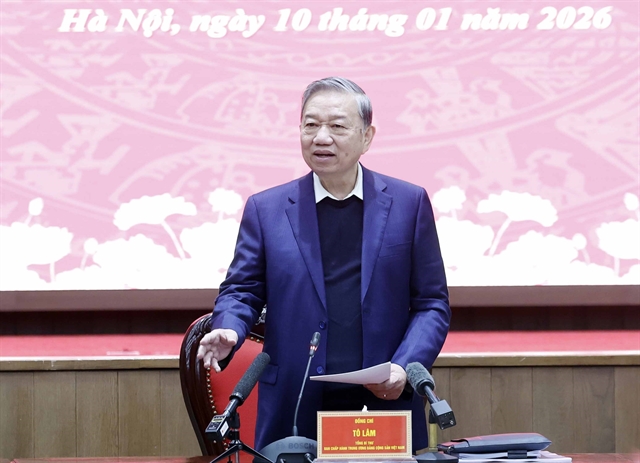 Opinion
Opinion

 |
| Minister of Science and Technology Huỳnh Thành Đạt. — VNA/VNS Photo |
In the 2024 Global Innovation Index (GII) report released by the World Intellectual Property Organisation (WIPO), Việt Nam climbed two places, now ranking 44th out of 133 countries and economies. Minister of Science and Technology Huỳnh Thành Đạt speaks to Vietnam News Agency about the country’s progress and solutions to improve the ranking.
Could you elaborate on Việt Nam's 2024 GII that was announced on September 26?
Việt Nam's GII has increased by two places compared to 2023, from 46th to 44th out of 133 countries and economies.
Among low-middle income countries, our country's GII continues maintaining its second position.
In 2024, Việt Nam ranks first globally in high-tech exports, high-tech imports and creative goods exports.
For the first time, our country's creative goods export index has reached the number one position in the world.
Notably, our country's venture capital indexes are showing an extremely positive development trend.
The number of venture capital deals has jumped by 27 places, ranking 50th out of 133 countries and economies.
The number of deals receiving venture capital has increased by 10 places, to 44th out of 133 countries and economies.
These positive improvements were achieved thanks to the close and drastic direction of the Government and the Prime Minister, as well as the participation of ministries, sectors, localities and the science, technology and innovation community.
Enterprises have also been active in research activities by applying science and technology to production and business and promoting innovation.
Could you tell us more specifically about indicators that have not been improved in 2024?
Two sets of pillar indicators - one on institutions and the other on human resources and research - remain unchanged in 2024.
In my opinion, significant work needs to be put into addressing institutional concerns in order to create favourable conditions for socio-economic development based on innovation, research and technology. Specifically, out of 133 economies and countries, the quality of legal regulations index currently stands at just 95.
In terms of research and human resources, the education index category has not seen much improvement.
To draw in both domestic and international students, the quality of the instruction must be continuously enhanced.
To satisfy international standards, investments in the education model are required.
It is necessary to promote the role of the universities in cooperation with the business circle when carrying out research, development and innovation activities.
It is worth noting that the ICT infrastructure index has not changed, ranked 72 out of 133 countries and economies, not achieving the target of improving the index following the Government’s resolution.
What solutions are needed to maintain and continue to improve the GII ranking in a sustainable manner?
To maintain and continue to improve the GII ranking in a sustainable manner, Việt Nam needs to focus on both the input and output of innovation, especially pay attention to improving index groups with much room for potential development.
To put the GII going forward, three sets of measures should, in my opinion, be put into action right away.
The first is to build specific breakthrough policy mechanisms, creating favourable conditions for the development of science, technology and innovation so that science, technology and innovation are truly the main driving force of the economic growth model, promoting the development of the digital economy and digital society.
The second solution is to enhance the ability of businesses to actively receive and assimilate cutting-edge technologies from around the globe, give priority to eco-friendly projects, link local and international businesses to engage in the global value chain, and keep fostering the growth of the innovative start-up ecosystem.
Third, in order to enhance the GII in the future, localities must implement measures to raise the Provincial Innovation Index. Ministries and sectors must, in accordance with their designated functions and tasks, establish and implement basic, synchronous, long-term solutions. — VNS




